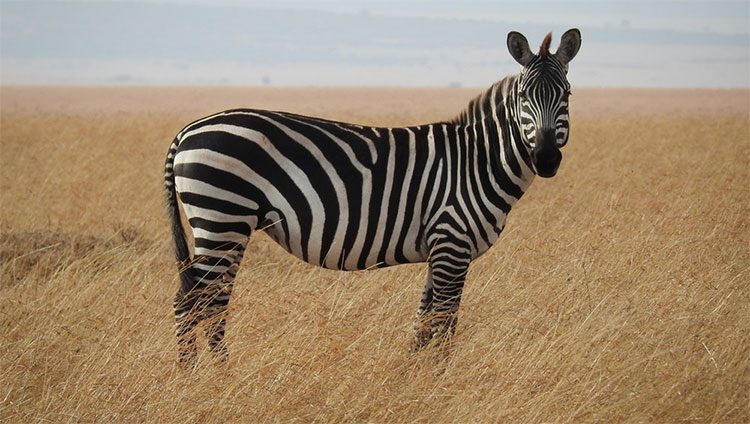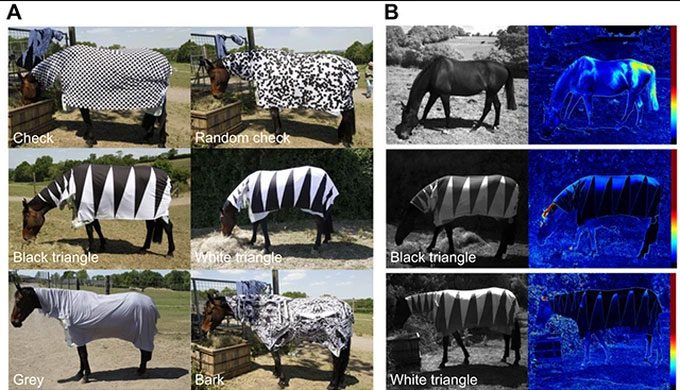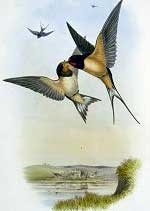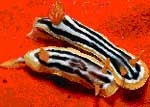Stripes Help Protect Zebras from Predators by Creating Optical Illusions
Using a computer model study, scientists from the University of Queensland, Australia, discovered that the stripes of zebras can create optical illusions when the animal moves, helping it evade various predators. The research findings were published in the journal Zoology, as reported by the BBC.
Previously, scientists believed that zebra stripes served social signaling functions or provided camouflage during dawn or dusk in grassland environments.

Zebras have alternating black and white stripes. (Photo: JGoldizen)
In this study, Professor Johannes Zanker from the University of London, UK, and his colleagues examined how zebras confuse predators and parasites by analyzing images and video footage.
The results showed that when zebras move, they create a misleading perception for observers. Humans and many other animals have nervous systems that detect motion based on object outlines, making them prone to misjudging the movement of the animal. For example, when a wheel is turned clockwise at a certain speed, a person may perceive the wheel as spinning counterclockwise.
“The wide diagonal stripes on the flanks, the narrow stripes on the back and neck of zebras create visual illusions for observers when the animal moves, especially in a large herd of zebras. This helps distract predators and misleads parasites’ approach,” said Martin, a PhD candidate at the University of Queensland, Australia.
He further added: “The results obtained are significant for studying patterns in animals. Many species, such as the virgin fish or snakes, also use body colors for camouflage. Humans can apply this knowledge to camouflage warships or organize large-scale formations.”

Zebra stripes also help regulate body temperature.
In addition to protecting zebras from predators, the stripes on zebras also help them regulate their body temperature.
By studying and comparing zebra stripes from 16 different locations with varying living conditions, scientists from the University of California, USA, discovered that the difference in heat absorption and dissipation in the dark and light areas of zebra fur is the reason for the stripe formation.
From their analyses combined with living conditions, scientists found a clear link between temperature and the skin layers of zebras. It was noted that in the hottest areas, zebras tend to have more stripes than normal and their stripes are also darker in tropical regions.
Explaining this phenomenon, scientists affirmed that the areas of fur that are white and black have different rates of heat absorption and dissipation, allowing the arrangement of stripes to create the most suitable air convection for the body of the zebra. In other words, it acts as an invisible air conditioner integrated into the zebra’s body.
In a recent study, scientists discovered a new function of these black stripes. Specifically, they seem to be more related to repelling blood-sucking flies.
This study was led by scientists from the University of Bristol in the UK. After conducting several experiments, they gradually found that the black stripes of zebras serve as a good protective measure against flies.
To reach this conclusion, researchers placed blankets with different designs on the backs of horses and recorded the behavior of blood-sucking flies as they approached and interacted with the horses.
The results showed that blood-sucking flies in particular, and flies in general, do not prefer to land on striped objects.

Different patterns tested on a horse’s back. (Photo: Journal of Experimental Biology).
Explaining this curious behavior, Professor Tim Caro from the University of Bristol noted that flies are attracted to large dark-colored objects. However, when the structure is disrupted by white patches, the flies become less inclined to interact.
This was demonstrated through experiments. The higher the contrast of the stripes, the less likely flies were to land.
This suggests that any hoofed animal with less overall dark coloration on its skin, or those with mixed colors, would have an advantage in reducing attacks from insects and parasites.





















































